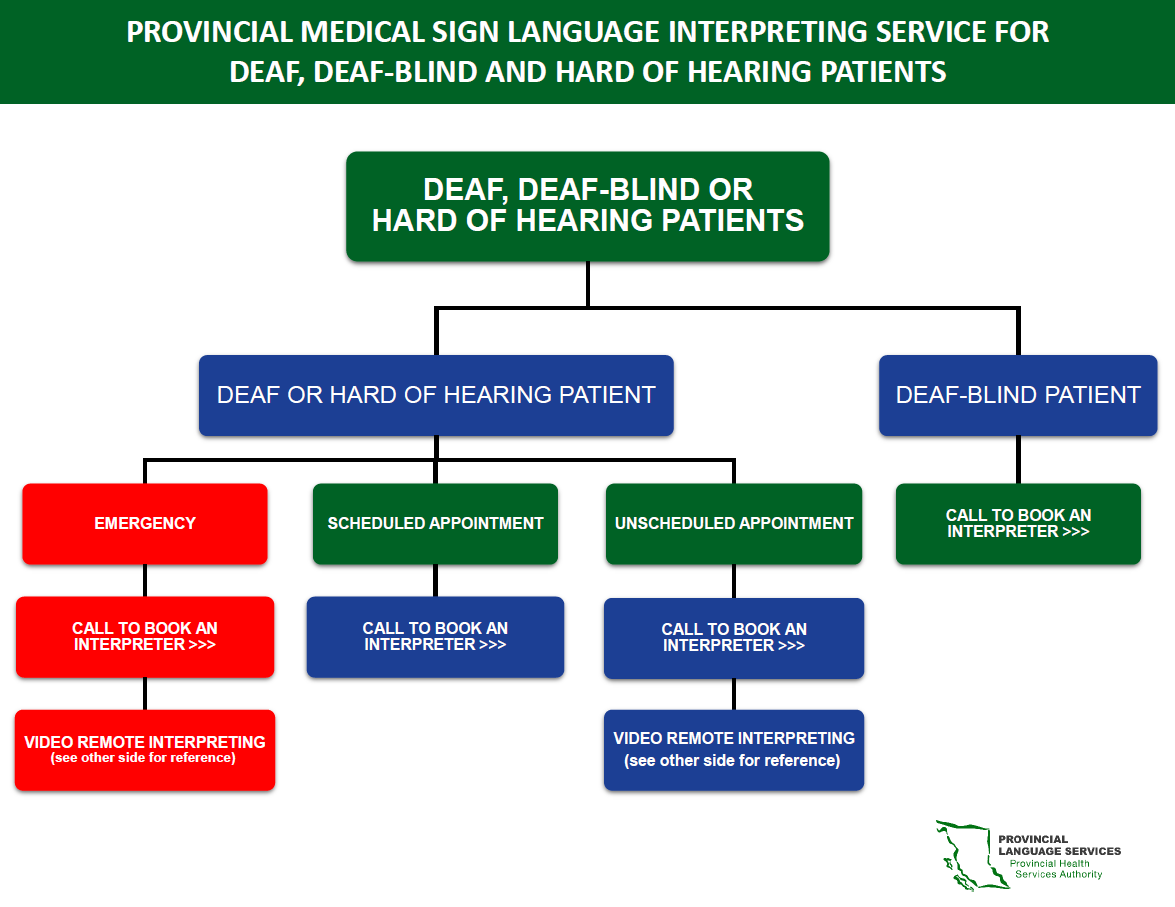Video remote interpreting uses audio and video technologies via a device such as an iPad to provide language interpreting virtually. Video remote interpreting is available 24/7 and has on-demand access to:
- 40 spoken languages via video
- American Sign Language via video
- 200 spoken languages via audio
Video remote interpreting devices can be found in emergency departments in Interior Health, Fraser Health, Northern Health, Vancouver Coastal Health, Providence Health Care, BC Children's Hospital, and BC Women's Hospital. Other health authority programs and services may also have video remote interpreting devices.
BC Emergency Health Service has video remote interpreting installed on their B.C. paramedics-issued devices for Deaf and Hard of Hearing individuals.
Although on-site interpreting is the preferred modality for Deaf and Hard of Hearing patients, video remote interpreting is acceptable in geographic locations where there is no or limited access to in-person sign language interpreters and when the communication between the patient and provider will be short.
Video remote interpreting is also acceptable as an interim solution for Deaf and Hard of Hearing patients until an on-site sign language interpreter arrives.


